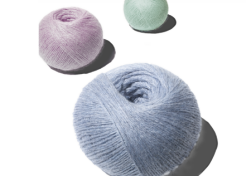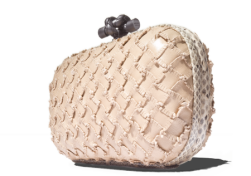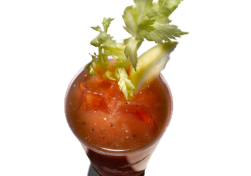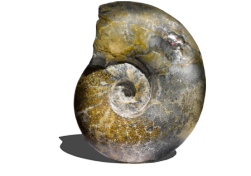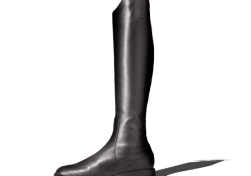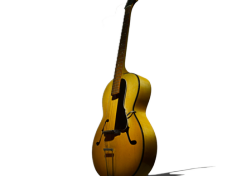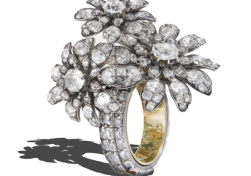To the ancient civilisations of the Maya and the Aztecs, it was a highly prized currency; now the humble cocoa bean is once again revered in the kitchens of Michelin-starred restaurants. Philipp Kauffmann, co-founder of the sustainable chocolate company Original Beans, has a passion for the world’s rainforests and a hard head for business. Not only has he helped stimulate and support sustainable livelihoods from Peru to Africa, he has also created a premium organic product that has won the admiration of chefs. For every bar of chocolate purchased, Original Beans plants a tree in the forest of its origin and pays producers up to six times the Fair Trade rate, ensuring that the economic benefits are passed all the way back to source. The Original Beans Cru Virunga dark chocolate from the Congo, described as “zingy with ripe morello cherries steeped in cassis, smoky tobacco and forest-floor notes” is made from just three ingredients: organic cocoa beans, cocoa butter and organic cane sugar. What it becomes after that is up to the skill and imagination of the world’s finest chefs. originalbeans.com
Although it has been used for centuries in the Middle East, until about ten years ago oud was almost unknown as an ingredient in Western perfumery. In Arabia, the sweet, rich scent is an important part of the culture. The resin of the agar tree is instilled into precious perfumes, and the tiny chips of agar are burnt to create a sweet smoke to fragrance homes, clothing and mosques. Due to its rarity, and the difficulty of harvesting the resin, oud costs about one-and-a-half times the price of gold – about 150lb of wood yields just five teaspoons of essential oil – and a kilo of oud costs upwards of $70,000. Roja Dove – the British custom perfumer – loved the scent so much that he launched three oud perfumes under his name. Why? “Oud is the smell of Arabia in a bottle,” he explains. “It reminds me of the people I met there and of the emotions inspired by the beauty of the landscape. For me, it’s ancient, it’s natural and incredibly heady. What more could you want of a fragrance?” rojadove.com
Like car manufacturers or yacht engineers, high-end watchmakers thrive on achieving ever-more mind-boggling feats of engineering. Except that in watchmaking it is on a micro scale. The skill of these (mainly Swiss) technicians is their ability to keep mechanisms small and light while improving the watches’ functionality; this they do by creating “complications”, or additional mechanical layers. The most complex of all of these complications is the tourbillon, invented by an Englishman to counter the effects of gravity on timekeeping accuracy and developed and patented by Abraham-Louis Breguet in 1801. Nothing is quite so desirable as a watch with a tourbillon. Why? Because the more complicated a watch, the harder it is to make and the fewer there are produced. The Breguet Messidor Tourbillon, costs $180,000. “An array of meticulously finished parts lovingly polished, chamfered, chased and scored with parallel decorative strokes by the most versatile of all instruments, the human hand.” breguet.com
Some of the finest cashmere, as lovers of the fabric will attest, is woven in Scotland. It is in the Scottish Borders region adjoining England, beside the clear streams, that a Scot, Joseph Dawson, invented a mechanical process to sort and clean the fibres in the 19th century, and it is here, ever since, that designers have had their clothing produced. The hair itself comes from the Mongolian goat, which lives in sub-zero temperatures at high altitudes in the mountains of Mongolia, China, Tibet and the Himalayan region of Kashmir. It is only, as James Sugden of Johnstons of Elgin explains, when the fiber is washed in Scottish spring water, hand-spun, then colored using the finest-quality non-harmful dyes, that the very finest cashmere becomes ultra-soft. “You can feel the difference between something that has been produced in Scotland and elsewhere,” he says. “Cashmere is ruined by corrosive dyes and chemicalized water. ‘Made in Scotland’ is reassurance that that fiber has been treated in the best way possible.” johnstonscashmere.com
Logos are an important way of signaling our wealth and our fashionability – key weapons in any status-conscious society. In previous ages, richly embroidered fabrics and tapestries delineated your class and engraved signet rings denoted your lineage; now logos have become the contemporary way of communicating our lifestyle, our aspirations and our means. However, in spite of the cachet that logos afford, there has been a noticeable rebellion against over-branding. Status that is shouted too loudly has become tacky (“new money” hiss the snobs or “too obvious” snort the fashionistas). Coolest of all, some argue, are products that have no logo at all, relying, instead, on trademark design details or fabrics. Think the boxy, collarless jackets that have been signature Chanel since 1925, or Hermès scarves, with their unmistakable patterns. Or, for instance, this clutch by the Italian luxury brand Bottega Veneta. It is entirely logo-less; yet that intrecciato weave is such a recognizable signature for those in the know, who needs a logo? bottegaveneta.com
Conventional wisdom has it that hard-won cocktail recipes must remain secret, each bar jealously guarding the process of alcoholic alchemy that turns base ingredients into liquid gold. But at St. Regis hotels, the Bloody Mary – one of the most famous cocktail recipes in the world – also has other versions for each St. Regis hotel. Created in 1934 by the head bartender at The St. Regis New York’s King Cole Bar, the concoction of vodka, tomato juice, celery salt, pepper, cayenne pepper, Tabasco sauce, lemon juice and Worcestershire sauce was an instant hit. Renamed the Red Snapper, a moniker that hasn’t withstood the test of time, order a Bloody Mary at The St. Regis New York today and a classic Red Snapper is what you will get. In Osaka order a Shogun Mary and prepare for a sharp kick of wasabi and soy sauce; on the island of Mauritius, La Belle Creole Mary comprises a racy little combo of plantation rum and aloe vera; and in Shenzhen, your Yan Mary comes with a side order of fresh oyster. The St. Regis Bloody Mary is a trip around the world without leaving the comfort of your bar stool.
stregis.com/bloodymary
Natural masterpieces created by the patient hand of time, fossils are the world’s oldest antiques, with even the youngest claiming a 10,000-year pedigree. While fossil collecting remains a popular scientific endeavor, the parallel trade in one-off statement pieces is gathering pace, as these exquisite natural objects catch the eye of fine-art collectors. Dale Rogers, the man behind Dale Rogers Ammonite, has spent his life hunting down rare specimens, but finds are becoming increasingly scarce. The closure of mines and quarries in former hunting grounds and a pronounced illegal trade makes fossil-hunting difficult. Rogers regularly visits countries such as Morocco, Madagascar and the US and has braved Afghan warlords and the frozen wastes of Siberia. The company offers a wide range of wonders, from the astonishing Atlas Medusa, a 1.75-ton amalgamation of 25 species of ammonite, to pieces of 4,000-year-old meteorite from Argentina. Rogers has a reputation around the world that is bolstered by exhibitions in the U.S., U.K., Dubai and Japan. Pieces similar to this Madagascan ammonite come in at around $1,000 – not bad for a 180-million-year-old slice of history. dalerogersammonite.com
Forget the Year of the Snake, in fashion terms, the horse continues to dictate the stakes in 2013. The paradigm of English country style, the equestrian look, was originally tailormade with sleek lines deployed for comfort and to avoid spooking the horse. Its adoption by the gentry was established in the early 1800s, and the look has rarely fallen out of favour since. Last year the aristocratic pursuit truly conquered the wider realm, with the global success of the stage and film versions of War Horse and the enthusiastic following of dressage at the London 2012 Olympics (Hermès designed a classic tricolore kit for the French team). Luxe label Gucci began life as a saddlery shop in Florence in 1906; from its trademark gold snaffle insignia to its red-and-green striped branding, its iconography is drawn from riding. The brand may have sexed up in the 1990s, but in today’s more sober climate it has cannily returned to its roots. Step forward the Victoria riding boot, with adjustable bridle strap detail. Although the Gucci vamp hasn’t been forgotten, it seems that she has turned to outdoor pursuits. gucci.com
When an Antoria six-string acoustic guitar played by Sir Paul McCartney in his early band The Quarry Men made $70,000 at Bonhams recently, no one batted an eyelid. Because alongside Elvis and Michael Jackson, The Beatles are kings of the thriving musical and entertainment memorabilia market. Financial woes usher many items to the auctioneer’s block: John Lennon donated his psychedelic Rolls Royce Phantom V to New York’s Cooper-Hewitt Museum to help settle an IRS dispute. It was auctioned at Sotheby’s after his death for $2.29 million. And death can be the ultimate fiscal stimulus: the late Elizabeth Taylor made history in 2011 when the Christie’s sale of her jewels fetched $116 million. Auctions of Michael Jackson’s stage outfits, meanwhile, continue to generate money for his debt-laden estate – Lady Gaga snapped up 55 such lots recently. Gaga knows that celebrity today means having a slice of your idol now: the Fame Monster star recently autographed a urinal that sold for $460,000 on eBay. bonhams.com; juliensauctions.com
Vintage jewelery may feature stones of the highest quality, but it can easily look dated. Eliane Fattal, daughter of legendary arts patron Jill Ritblat, has found a stylish way to offer a second life to antique jewels. A photographer and art historian, Fattal was best known for keeping American Vogue editor Anna Wintour in statement necklaces. Stumbling across a vintage flower brooch, she persuaded S.J. Phillips to transform it into a contemporary cocktail ring, laying the groundwork for her exquisite Metamorphosis collection. Inspired by the grand dames of glamour, such as Elizabeth Taylor and Peggy Guggenheim, Fattal created 20 unique pieces that had the international jewelery trade in raptures. While Jonathan Norton, one of the fourth-generation brothers who run S.J. Phillips today, oversaw the technical side (Fattal has no formal jewelery training), she found innovative ways to reinterpret old pieces to suit the demands of modern women’s lifestyles. Many can be unscrewed and worn in several ways, from a rose-cut diamond star brooch, pictured, which morphs into the head of a large cocktail ring, to a diamond and emerald-striped scarab pin reborn as a surreal hair ornament. sjphillips.com



